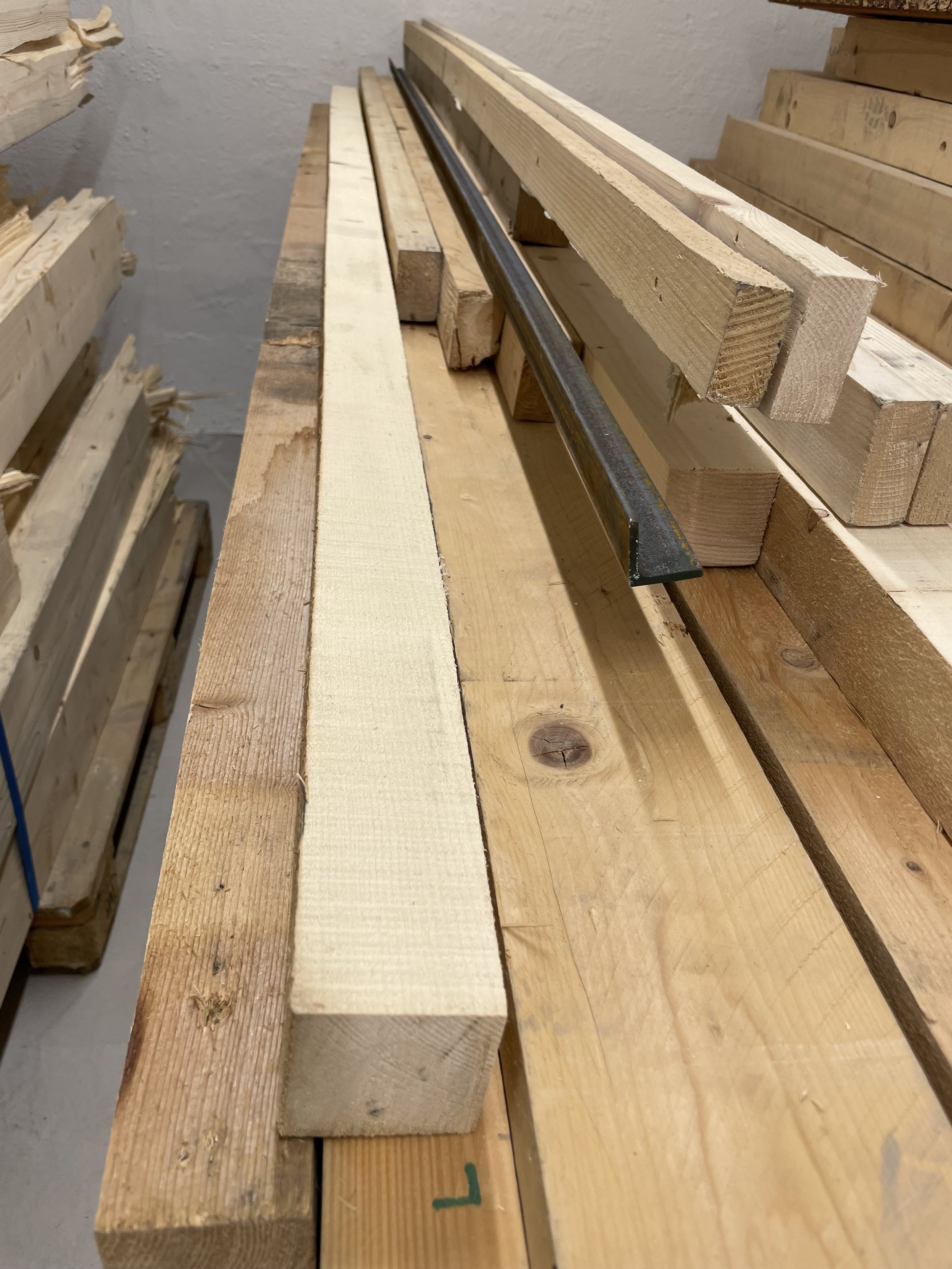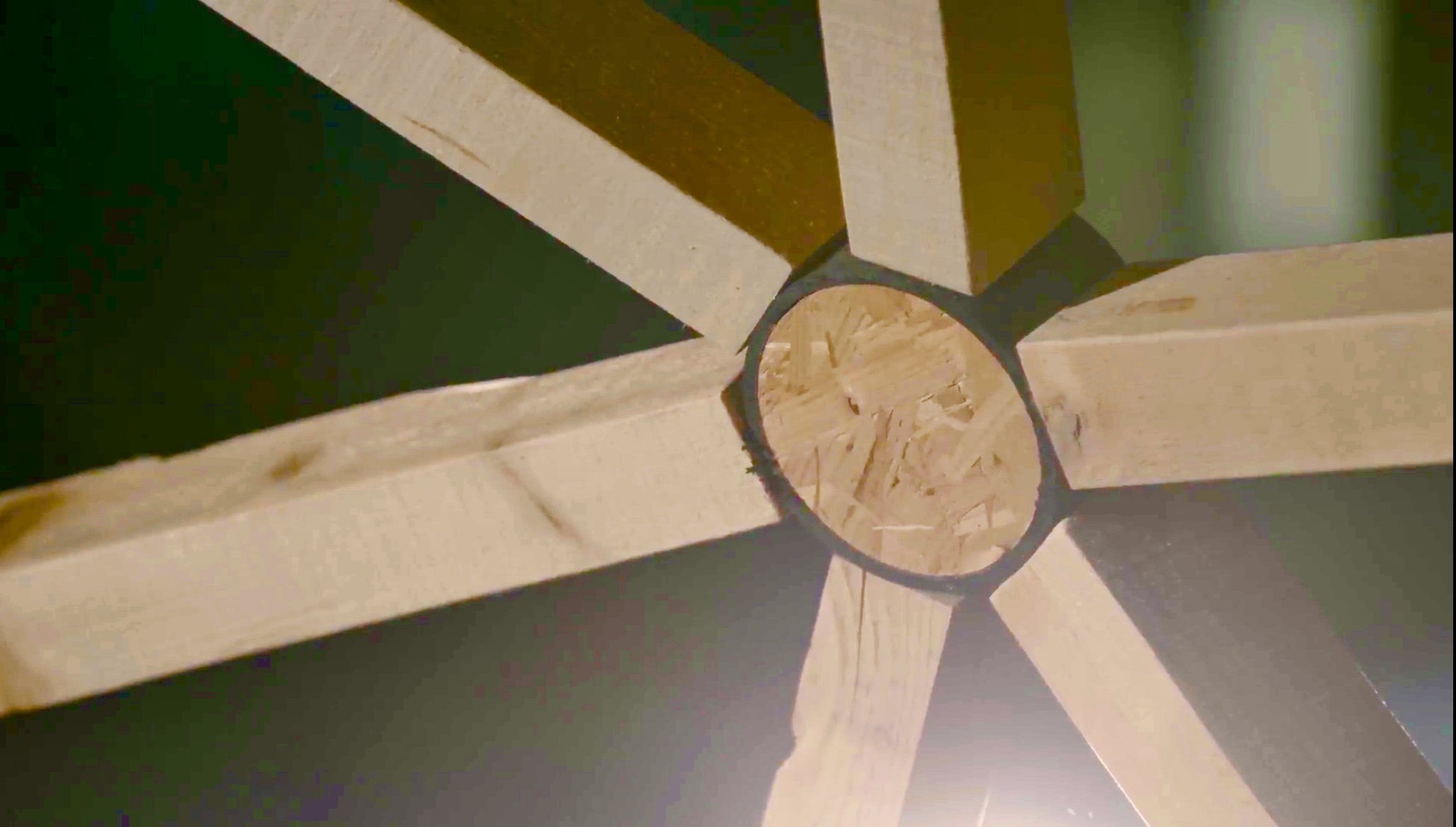

FAQ about domes
-
We have adopted a traditional Swedish recipe for creating our natural paint, specifically tailored to enhance the resilience of our domes against the elements of outdoor weather. By utilizing this time-tested method, we ensure that our paint consists of carefully selected natural pigments and binders that provide exceptional protection and longevity. The Swedish recipe combines the use of locally sourced materials, such as mineral-based pigments and organic binders, which have proven to withstand the challenges posed by varying weather conditions. With this unique blend, our painted domes not only showcase an authentic aesthetic but also offer remarkable resistance to rain, wind, and sun exposure, ensuring their beauty and structural integrity for years to come."
-
At our construction site, we are committed to embracing a circular approach by repurposing waste materials obtained from building demolition sites to construct our innovative domes. Instead of allowing these materials to go to waste, we carefully salvage and transform them into valuable resources, using computational design algorithms. By employing creative techniques and advanced reuse processes, we convert salvaged materials like timber and plastic into durable components for our dome structures. This circular method not only minimizes waste and reduces the burden on landfills but also ensures that valuable resources are given a second life. Through our commitment to reusing these materials, we are not only constructing sustainable domes but also contributing to a more environmentally conscious and responsible construction industry.
-
In addition to our focus on sustainable construction practices, we also support our clients in the reuse of second-hand domes, promoting a circular economy mindset. We understand the value and potential of pre-existing dome structures, and our team works closely with clients to assess the feasibility of repurposing and reimagining these structures for their specific needs. Through our expertise in dome design and renovation, we assist clients in revitalizing second-hand domes, ensuring they meet the desired functional and aesthetic requirements. By encouraging the reuse of these structures, we provide cost-effective and environmentally friendly alternatives.
-
The choice of cover for your dome will depend on various factors, including the intended purpose of the dome, the local climate conditions, and your personal preferences. Geodesic domes often use a specific cover designed to fit the dome's unique shape. These covers are typically made of durable and recycled materials like UV-resistant PVC. We also help ‘material hunt’ for reused plastics from greenhouses for example. You can also use fabric covers. They are lightweight, flexible, and can be treated for water resistance and UV protection too. Fabric covers allow for good breathability and can create a cozy and natural ambiance inside the dome. However, they may require periodic maintenance and may not be as durable as other options. Other options are polycarbonate panels, which provide transparency and allow natural light to enter the dome while offering protection from the elements. These panels are lightweight, impact-resistant, and provide good insulation. Depending on your specific requirements, you may explore additional options like glass, metal or wooden panels, or other reused materials. Each option has its unique characteristics and considerations. We often use reused plastic that we attached with wooden slats for a high-end finish. It is important to consult with dome experts or professionals experienced in dome construction to determine the most suitable cover for your specific dome project. They can provide valuable insights based on your location, intended use, and budget, helping you make an informed decision. Contact us below if you would like to consult us.
-
Several factors contribute to the strength and structural integrity of a dome. The geometric shape of a dome, often a hemisphere or a geodesic structure, inherently distributes the load evenly across its entire surface. This shape allows for efficient weight distribution, reducing stress concentration points and increasing overall strength. The choice of materials plays a vital role in determining the strength of a dome. Typically, our domes are constructed using materials like timber. These materials offer high strength-to-weight ratios, allowing the dome to withstand external forces and structural loads. Domes rely on the balance between compression and tension forces to maintain their stability. The curved shape of a dome allows it to efficiently transfer external loads, such as wind or snow, into compression forces along the curved surfaces. The inherent strength of the materials helps withstand these compressive forces, while tension elements counterbalance any outward or uplift forces. Proper construction techniques are crucial in ensuring the strength of a dome. Careful attention to detail during the assembly process, including precise alignment, proper connections, and adequate reinforcement, is essential. Expertise in dome construction techniques and adherence to engineering principles are vital to achieving a structurally sound dome. The specific design, size, and purpose of the dome will influence the structural considerations and requirements. Engaging with a qualified architect or structural engineer experienced in dome construction is highly recommended to ensure the dome's strength and safety based on your specific project requirements.
-
A geodesic dome is a spherical or partially spherical structure composed of interconnected triangular or polygonal elements. It was popularized by the American architect and engineer R. Buckminster Fuller in the mid-20th century. Geodesic domes are constructed using a network of struts or beams that form a geodesic pattern, creating a self-supporting framework. The distinctive feature of a geodesic dome is its geodesic geometry, which divides the surface into a series of interconnected triangles or polygons. This geometric design offers several advantages, including strength, stability, and efficient use of materials. Geodesic domes are known for their structural integrity, as the triangular or polygonal elements distribute and transfer loads evenly across the entire structure. The interlocking nature of the elements creates a self-supporting and highly stable framework. Geodesic domes can be constructed in various sizes, ranging from small backyard structures to large-scale buildings and event spaces. We have made them for various applications, including residential spaces, greenhouses, exhibition halls, meeting spaces, classrooms, and radio-stations. The spherical or curved shape allows for better airflow and natural circulation inside the dome. Additionally, the dome's structural properties enable it to withstand extreme weather conditions, including heavy snow loads, wind, and seismic forces. Geodesic domes offer a unique and visually striking architectural form while providing strength, stability, and functional versatility.













Do you have more questions about your dome project? Don't hesitate to contact us. We are here to answer all your questions.

